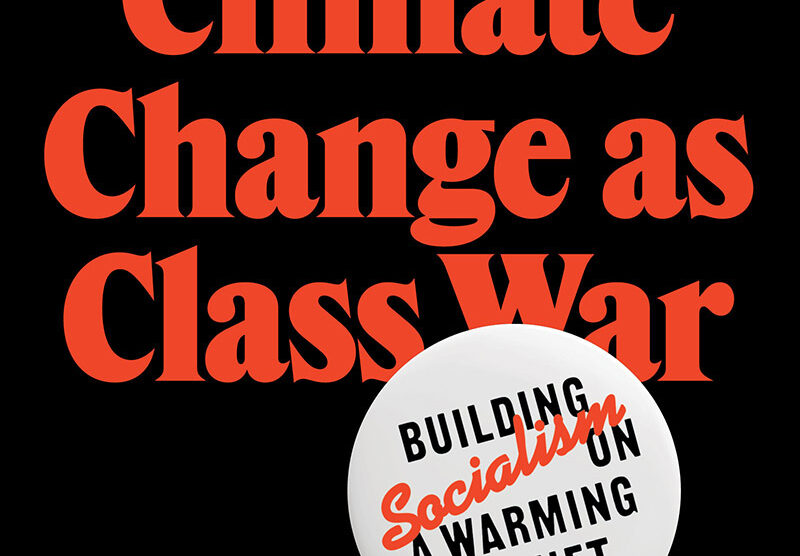February 21, 2023
How Degrowth Can Help Reduce Global Conflict
By Andrew Ahern
 As the ecological emergency accelerates, so do proposals to address it. Over the last few years, the concept of degrowth has grown in popularity with features in major publications, growing political support, and best selling books like Kohei Saito’s Capital in the Anthropocene: Towards the Idea of Degrowth Communism in Japan.1 Defined as an equitable and democratic reduction of energy and material throughput targeted at rich nations and the globally wealthy, degrowth is based on three first principles: strong ecological sustainability, designing economies and social systems that are not predicated on the economic growth imperative, and global social justice. As Rahila Gupta describes, “degrowth emphasizes a time-rich society of solidarity, equality and mutual care, redistribution of resources and proper democracy based on extended political participation—all ways of living proven to enhance well-being rather than anxiety-producing materialism.”2
As the ecological emergency accelerates, so do proposals to address it. Over the last few years, the concept of degrowth has grown in popularity with features in major publications, growing political support, and best selling books like Kohei Saito’s Capital in the Anthropocene: Towards the Idea of Degrowth Communism in Japan.1 Defined as an equitable and democratic reduction of energy and material throughput targeted at rich nations and the globally wealthy, degrowth is based on three first principles: strong ecological sustainability, designing economies and social systems that are not predicated on the economic growth imperative, and global social justice. As Rahila Gupta describes, “degrowth emphasizes a time-rich society of solidarity, equality and mutual care, redistribution of resources and proper democracy based on extended political participation—all ways of living proven to enhance well-being rather than anxiety-producing materialism.”2
While degrowth predominantly targets the Global North’s unsustainable use of fossil-fuels or contributions to biodiversity loss, in a highly interconnected global system, growth in the North necessarily impacts the South in terms of their development, their ecosystems, and the kind of vulnerability these countries are subject to. At the most basic level, increased economic growth means more demand for energy and materials. In a period of an energy transition where those materials are largely found in the Global South—Latin America, Asia, and Africa predominantly—conflicts, injustice, and greenwashing would be inevitable without some kind of just transition that reduces the relative demand for these materials.3 This is where degrowth’s commitment to global justice and ecological sustainability set it apart from other green transition narratives.
Let’s use the example of electric vehicles. The batteries in these vehicles rely on minerals like nickel, cobalt, and lithium, which, according to the World Bank, could drive demand up to 500 percent depending on the mineral, all else being equal.4 Indonesia, for instance, holds the world’s largest nickel reserves and environmental degradation is already underway in the pursuit of such a mineral. According to the Environmental Justice Atlas, “Fisheries are declining and health is deteriorating in Kawasi since the local nickel mining and smelting project started dumping waste in the sea.”5 Such local deterioration is explored in visual detail in the Yale Environment 360 film contest winner “From Dreams to Dust,” which shows how the pursuit of materials for green technologies result in polluted drinking water, barren landscapes, and threatened workers and communities.6 Since 2012, at least fourteen Indonesian environmental defenders have been killed.7 This extractive logic applies to other green technologies like solar panels and wind turbines as well, since renewables are still materially intensive (although less so than fossil fuels).8 While it is no doubt true that we need to get off fossil fuels, there are choices to be made about how much energy we use, where it comes from, and who is faced with the risks and benefits.
We are already seeing these conflicts play out in real time all over the world, and while still at the earliest stage of the energy transition—if we can even call it that. According to Global Witness, an international nongovernmental organization that tracks the deaths of environmental defenders, the rise in murders among people defending their local land or natural resources has risen almost every year for the last two decades, with the largest source of conflict typically in the mineral sector.9 It is no coincidence that at the same time environmental protection is most needed, environmental conflict has reached its highest point yet. To add insult to injury, the US military is well aware of the importance of these minerals. In the words of the US Department of Defense, “Strategic and critical materials are vital to our national defense and economic prosperity, enabling the United States to develop and sustain emerging technologies. They also improve our warfighting capability, support family-sustaining jobs, and strengthen our alliances and partnerships.”10 In no uncertain terms the US military sees access to these “strategic and critical minerals” as vital to sustain economic growth and the United States’ dominance on the world stage. Unfortunately, without drastic changes in energy demand, this trend will only continue.
The United Nations International Resource Panel found that 90 percent of biodiversity loss and water stress are caused by the extraction and processing of natural resources.
Given these technologies and materials are largely to service the Global North’s high consumption, a reduction in energy and material use by rich nations would reduce the potential for environmental conflict in the Global South. In addition to reducing conflict over the minerals themselves, it would also help hasten our pursuit of a more sustainable society, thereby reducing the impact of climate change and environmental degradation in countries like Nigeria or Pakistan, both of which experienced major floods this past year.11 As research demonstrates, countries struck by climate-induced disasters see a rise in authoritarian governments and draconian policy shortly in the aftermath.12 A warming world spells increased oppression among the world’s poor both directly by ecological disasters and how governments respond. Moreover, as the United Nations International Resource Panel found, 90 percent of biodiversity loss and water stress are caused by the extraction and processing of natural resources.13 A reduction in energy and material use would thus also reduce biodiversity loss—another area of life-and-death struggle for many (especially Indigenous people) in the Global South.14 Degrowth increasingly appears as one of, if not the only, Northern political programs that can avert ecological collapse, ensure global justice, and provide everyone with good lives.
A scenario where demand for production and consumption is reduced in the Global North would allow Global South countries room for their own development without having to service Northern growth or follow the ecologically destructive path set by the United States and Europe. Degrowth seeks to reverse this unequal ecological exchange where the North and South’s resource use converge.15 In such a scenario, Global South countries could focus on using their productive capacity and resources to meet their own needs. For instance, according to the research by Jason Hickel and colleagues, an estimate of roughly 43 percent of Global North materials have come from the South. They state, “in 2015 the North net appropriated from the South 12 billion tons of embodied raw material equivalents, 822 million hectares of embodied land, 21 exajoules of embodied energy, and 188 million person-years of embodied labor, worth $10.8 trillion in Northern prices—enough to end extreme poverty 70 times over. Over the whole period, drain from the South totalled $242 trillion.”16 Such an analysis, Hickel and his team claim, confirms that unequal ecological exchange is a significant driver of uneven development, inequality, and ecological breakdown. A degrowth program that is international in scope and decolonial in principle will lessen environmental damage, raise living standards for billions of people, and provide some level of equality on the world’s stage.
It should be noted that degrowth is not a zero-sum game where those in the Global North would be “worse off” than before. In fact, life would be much better for the global majority, whether you live in the United States or Ecuador. While it can’t be denied that degrowth would allow us to avert ecological breakdown, the types of policies and provisioning systems at the heart of the degrowth program would put a special emphasis on wellbeing and sustainability in all countries. In a degrowth transition, as opposed to the “grow or die” ethos of modern economics, all people would have access to life’s necessities: healthcare, education, housing, energy, internet—what some call a “social guarantee.”17 Moreover, people would work less and have more free time to enjoy friends, family, and nature; people would buy less consumer goods since these items would have repair mandates; people’s health would improve due to less pollution from fossil fuels and more plant-based diets as well. There is a bevy of research demonstrating how we can collectively live better lives than we do now while reducing our use of energy and materials.18
Critics of degrowth often ask “who would this vision appeal to?” The answer: the people. In my own research analyzing the world’s citizens assemblies, I found that randomly selected citizens preferred policies that fit within the degrowth framework: the reduction of energy use, transportation systems centered around walking, biking, and public transit, and minimizing flights, to name a few.19 In the case of Spain, their citizens’ assembly advocated for increased understanding of degrowth among the population. Poll after poll shows that people prioritize the environment over economic growth.20 Contrary to bad-faith projections coming from both the right as well as some on the left, people are willing to enact much more radical ecological policies than political ideologues are willing to give them credit for.
Scientific experts also agree with the urgency for degrowth. In a study on support for growth-critical or growth-supportive statements, researchers found that the majority of scientific experts support either degrowth or “a-growth” (also called postgrowth).21 In a survey of experts who work for the German Environment Agency, these workers were given explicit and implicit statements about growth where they took a position supporting green growth, a-growth, or degrowth.22 In both the explicit and implicit answers, these experts were found to be much more growth critical than accepting the current economic dogma of green growth. In fact nearly half of the respondents supported degrowth positions when they were implicitly stated, demonstrating the strong scientific foundation of degrowth without the political “baggage” of the term that may turn off some scientists.23 This makes sense since there is no existing evidence for green growth.24 Degrowth, as it has matured, is no longer becoming an evidential question, but one of strategy and how to gain political power.
At the beginning of this piece I mentioned how in a highly interconnected global system, growth in the North impacts those in the South. While reducing the demand for energy and materials would likely help reduce conflict in these countries, lessen impact on local ecosystems, and allow them to use their productive capacity to meet their own needs, it is possible that without careful attention, degrowth may also exert unforeseen, negative impacts on the South. Firstly, the degrowth movement is largely composed of individuals who are white, Western, and materially well-off. This poses a risk that the policies and proposals on offer from the degrowth movement may not be inclusive and diverse to include the Global majority. Although the degrowth movement has been clear that its intentions are directed towards the Global North, this lack of direct contact has resulted in Global South’s environmental justice movements questioning the applicability, framing, and analysis of degrowth.25 In a series of interviews with environmental justice organizers in the Global South, Beatriz Rodríguez-Labajos and her team found that, “For many people in the South – especially social movements – ‘degrowth’ will not make sense because of their own history and experiences, having often suffered from situations of poverty and scarcity of the most basic needs. Some ‘growth’ to reach more security in terms of survival is regarded as logical. Therefore, focusing the struggle on degrowth is not only perceived as ‘missing the point’, but is also in some ways a ‘luxury’ debate.” As the labor movement saying goes, “if you are not at the table, you are on the menu.” While degrowth has comprehensive policy focused on the Global North, the most direct way to clarify degrowth’s intentions is to make a concerted effort to directly engage with movements in the Global South in bringing the ingredients and drafting the degrowth menu. We can build off the efforts already being made, especially with recently increased support among Global South political and thought leaders.26
Degrowth could remedy the lack of North-South solidarity where the Northern environmental movement takes direct responsibility for transforming how the Northern ways of life and production systems rely on the labor, energy, and materials from the South.
Furthermore, as the degrowth movement has developed, so has its strategy.27 In its earlier stages, the degrowth movement was largely focused on the local scale with an emphasis on bottom-up organizing. Since then, degrowth scholars and activists have recognized the need for a complementary strategy of both bottom-up organizing and centrally directed implementation. Like all political projects that rely on existing institutions, there is an inherent risk that degrowth can be co-opted or lose its connection with the grassroots. In this way, the degrowth movement could become too provincial with electing the right people, playing “pragmatic” politics, and betraying the interests of the Global majority. This critique is not exclusive to degrowth; all major political projects require navigating this difficult political space.
These criticisms are not to condemn degrowth, but rather, to present intellectual clarification and greater coordination between the degrowth movement and its siblings in the South including Buen Vivir, La Via Campesina, and other post-development and ecosocialist movements. On a strategic basis, degrowth could remedy the lack of North-South solidarity where the Northern environmental movement takes direct responsibility for transforming how the Northern ways of life and production systems rely on the labor, energy, and materials from the South (including the waste and ecological consequences), thereby demonstrating our commitment to a decolonized and anti-imperialist ethos. The Northern environmental movements have thus far largely ignored this Global interdependence. Making this point explicit in our organizations’ communications, education, and political advocacy is a first step. Implementing policies that reduce demand and ensure global justice can happen on both local and national levels in which movements target energy efficiency efforts, reduce working weeks, shift tax burdens from labor to consumption, and first and foremost target the wealthy through global redistribution of wealth via luxury taxes and debt relief. Furthermore, Ideas and actions that provide the Global South with the opportunity to take back its fiscal and productive sovereignty will also hasten a move towards degrowth.28
In addition, a key industry for degrowth is the US military. As it stands, the US military is the world’s largest institutional polluter, emitting more greenhouse gasses annually than over 140 other countries, largely due to its massive transportation system.29 Further, the US military has over 585,000 facilities, at least 750 military bases in 80 countries and owns nearly 27 million acres of land in the US alone, whereby they cut down forests, pollute landscapes, and threaten biodiversity in the process.30 Given the US Military’s neocolonial goals of subjugating the Global South, this is one institution the degrowth movement should prioritize in its efforts to promote global social justice and build international solidarity. The military can never be “greened”; it can only be “degrown” or abolished.31
In a recent Upstream Podcast documentary about the green transition, guest participant and human rights activist Sergio Chaparro framed the current “Green New Deal Discourse” into three buckets: a centrist version like the recently passed Inflation Reduction Act (IRA) which seeks public-private partnerships through tax credits; Alexandria Ocasio-Cortez’s social democratic Green New Deal that centers Keynesian public investment and racial equity; and thirdly, an internationalist ecosocial Green New Deal in which Caparro placed degrowth.32 Unlike either Biden’s IRA or AOC’s Green New Deal which are largely nationalistic, parochial, and predicated on expanding economic growth, degrowth is international in its scope, ecologically sound in its science, and thinking beyond carbon tunnel vision.33 These are the terms and scales we need to be thinking in if we are to avert ecological collapse and transform society for the better. Degrowth offers a framework for coordination and solidarity between Global North and South movements in our strategies, tactics, and vision for a better world — free from the extractivist and unjust nature of colonial capitalism that has sacrificed the South’s autonomy and livelihood for the North’s growth, all the while failing to deliver a decent life to ordinary people in the process. In a highly connected economic-ecological system, there is a moral and material imperative for degrowth.
Notes
- Justin McCurry, “‘A New Way of Life’: The Marxist, Post-Capitalist, Green Manifesto Captivating Japan,” The Guardian, September 9, 2022; DiEM25 Communications, “Jason Hickel Joins the DiEM25 Advisory Panel – DiEM25 Communications,” DiEM25, March 21, 2022; Spencer Bokat-Lindell, “Do We Need to Shrink the Economy to Stop Climate Change?,” The New York Times, September 16, 2021.
- Rahila Gupta, “The Case for Degrowth,” Byline Times, October 26, 2022.
- Clare Church and Alec Crawford, Green Conflict Minerals (International Institute for Sustainable Development, 2018).
- “Mineral Production to Soar as Demand for Clean Energy Increases,” World Bank Group, May 11, 2020.
- EJOLT, “Nickel Rush Threatens the Health and Environment of Obi Island’s People, Indonesia,” Environmental Justice Atlas, accessed February 21, 2023.
- “In Indonesian Mining Region, the EV Boom Takes a Heavy Toll,” Yale E360, August 22, 2022.
- Ali Hines, “Decade of Defiance,” Global Witness, September 29, 2022.
- Hannah Ritchie, “Mining Quantities for Low-Carbon Energy Is Hundreds to Thousands of Times Lower than Mining for Fossil Fuels,” Sustainability by Numbers, January 18, 2023.
- “The Industries Causing the Climate Crisis and Attacks against Defenders,” Global Witness, September 13, 2021.
- “The Defense Department’s Strategic and Critical Materials Review,” U.S. Department of Defense, accessed February 21, 2023.
- Ope Adetayo, “Nigerian Flood Victims Decry Government’s Response to Disaster,” Al Jazeera, October 25, 2022.
- Kate Lyons, “Extreme Weather Fuels Government Oppression in Island Nations, Study Finds,” The Guardian, November 17, 2022.
- “UN Calls for Urgent Rethink as Resource Use Skyrockets,” UN Environment, March 12, 2019.
- The Editors, “Biodiversity’s Greatest Protectors Need Protection,” Scientific American, October 1, 2021.
- John Bellamy Foster and Hannah Holleman, “The Theory of Unequal Ecological Exchange: A Marx-Odum Dialectic,” The Journal of Peasant Studies 41, no. 2 (March 4, 2014): 199–233.
- Jason Hickel et al., “Imperialist Appropriation in the World Economy: Drain from the Global South through Unequal Exchange, 1990–2015,” Global Environmental Change: Human and Policy Dimensions 73 (March 1, 2022): 102467.
- “Social Guarantee,” TSG 2022, accessed February 21, 2023, https://www.socialguarantee.org/.
- Robert B. Jackson et al., “Human Well‐being and per Capita Energy Use,” Ecosphere 13, no. 4 (April 2022); Joel Millward-Hopkins et al., “Providing Decent Living with Minimum Energy: A Global Scenario,” Global Environmental Change: Human and Policy Dimensions 65 (November 1, 2020): 102168.
- Andrew Ahern, “We Are Told over and over That Degrowth Is a Non-Starter and Will Alienate Everyday People from Ecological action. Of Course, These Same People Never Provide Evidence, Just Their Opinion. So What Does the Evidence say? I Think Citizens’ Assemblies Provide the Answer. A 🧵 pic.twitter.com/bFexaGeKo9,” Twitter, August 29, 2022.
- Martin Armstrong, “Environmental Protection vs. Economic Growth,” Statista, April 12, 2022; O. Gaffney, Z. Tcholak-Antitch, et al., The Global Commons Survey (Global Commons Alliance: 2021).
- William J. Ripple et al., “World Scientists’ Warning of a Climate Emergency,” Bioscience 70, no. 1 (November 5, 2019): 8–12.
- Cathérine Lehmann, Olivier Delbard, and Steffen Lange, “Green Growth, a-Growth or Degrowth? Investigating the Attitudes of Environmental Protection Specialists at the German Environment Agency,” Journal of Cleaner Production 336 (February 15, 2022): 130306.
- Most scientists view science as apolitical as a result of the dominant ideology. This is in contrast to the position of radical science, which stipulates that science is inherently political. –Ed.
- Andrew Ahern, “A Thread on Studies and Literature Reviews for Green Growth. ‘In a 2019 Paper the Authors Reviewed 179 Articles Published on Decoupling between 1990-2019, Finding ’no Evidence of the Kind of Decoupling Needed for Ecological Sustainability.” https://t.co/ZoIf5T3NI1,” Twitter, November 24, 2021.
- Beatriz Rodríguez-Labajos et al., “Not So Natural an Alliance? Degrowth and Environmental Justice Movements in the Global South,” Ecological Economics: The Journal of the International Society for Ecological Economics 157 (March 1, 2019): 175–84.
- “Degrowth India Initiative,” Degrowth India Initiative, accessed February 21, 2023; Santiago Gómez Hernández, “What Is The Theory Of Degrowth? Gustavo Petro’s Development Proposal,” LatinAmerican Post, September 7, 2022; Sabrina Fernandes, “An Ecosocialist Strategy to Win the Future,” Rosa Luxemburg Stiftung, November 17, 2022.
- “Degrowth & Strategy – Book on how to bring about social-ecological transformation,” accessed February 21, 2023.
- Jason Hickel, “How to Achieve Full Decolonization,” New Internationalist, August 9, 2021.
- Benjamin Neimark, Oliver Belcher, and Patrick Bigger, “US Military Is a Bigger Polluter than as Many as 140 Countries – Shrinking This War Machine Is a Must,” The Conversation, June 24, 2019.
- Department of Defense, Base Structure Report FY 2018; Mohammed Haddad, “Infographic: US Military Presence around the World,” Al Jazeera, September 10, 2021; Avery Koop, “How Much Land Does the U.s. Military Control in Each State?,” Visual Capitalist, July 27, 2022.
- Another key sector ripe for degrowth is the transportation sector. Recent research by the Climate and Community Project has found that the United States can drastically reduce its material demand for lithium by prioritizing walking, biking, and public transport instead of electric vehicles. “More Mobility Less Mining,” ClimateAndCommunity, accessed February 21, 2023; see also “Climate Collateral,” Transnational Institute, accessed February 21, 2023.
- The Green Transition Part 2: A Green Deal for the People (Upstream Podcast, 2022).
- “It’s Time to Move beyond ‘Carbon Tunnel Vision,’” SEI (Stockholm Environment Institute, March 25, 2022).





